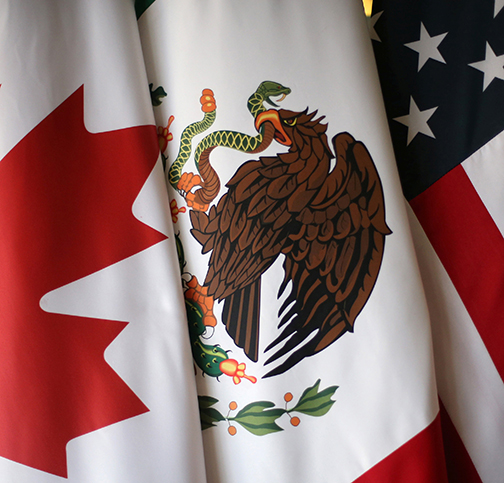
This article is part of a series that reflects on the first year of the Trump administration.
In 2017, US President Donald J. Trump withdrew from the Trans-Pacific Partnership (TPP) and began renegotiating the North American Free Trade Agreement (NAFTA). Although NAFTA needs to be updated to better fit our 21st century economy, we can’t forget the positive effect it has had on American wages, employment levels, and the quality of jobs.

What was US policy prior to Trump? Former US President Barack Obama devoted much attention to moving forward the Trans-Pacific Partnership (TPP), a commercial agreement between the United States and eleven other countries.
According to the United States Trade Representative (USTR), “ninety-five percent of the world’s consumers live outside the US and TPP would allow American farmers, ranchers, manufacturers, and small businesses to compete—and win—in some of the fastest-growing markets in the world.”
The TPP would have become the de facto rules of the game in international trade, with, among member countries, the elimination of thousands of tariffs and the establishment of standards for copyright protections and intellectual property rights.
The core of the North American Free Trade Agreement (NAFTA), between the United States, Canada, and Mexico remained untouched by the Obama administration.
What has Trump said?
“Personally, I don’t think we can make a deal because we have been so badly taken advantage of, I think we’ll end up probably terminating NAFTA at some point.”
— US President Donald J. Trump at a rally in Arizona on August 22, 2017.
“We’re renegotiating NAFTA now. We’ll see what happens. I may terminate NAFTA. A lot of people are going to be unhappy if I terminate NAFTA. A lot of people don’t realize how good it would be to terminate NAFTA because the way you’re going to make the best deal is to terminate NAFTA.”
— US President Donald J. Trump in an interview with Reuters on January 17, 2018.
What has changed? Trade has been at the forefront of the debate since the 2016 election. It’s been the scapegoat for growing uneasiness toward a more globalized, automated world economy.
In 2017, Trump withdrew from the TPP and began renegotiating NAFTA. Although NAFTA needs to be updated to better fit our 21st century economy, we can’t forget the positive effect it has had on America wages, employment levels, and the quality of jobs.
Trump has several goals in NAFTA negotiations, including: reducing the trade deficit with Mexico; strengthening “rules of origin” for auto manufacturers; limiting liability for Internet companies; revising investor-state dispute settlement mechanisms; and allowing NAFTA to expire after five years if all three countries do not renew it.
Despite ongoing negotiations, the threat of withdrawal remains. As detailed in an Atlantic Council report, withdrawing from NAFTA would have immediate negative ramifications for the US economy and for US national security. NAFTA has not only built a close commercial relationship, but is also fundamental to a trustworthy strategic partnership that could change should NAFTA renegotiations turn sour.
Katherine Pereira is an associate director in the Atlantic Council’s Adrienne Arsht Latin America Center.
Image: Flags are pictured during the fifth round of NAFTA talks involving the United States, Mexico, and Canada, in Mexico City, Mexico, on November 19, 2017. (Reuters/Edgard Garrido)

